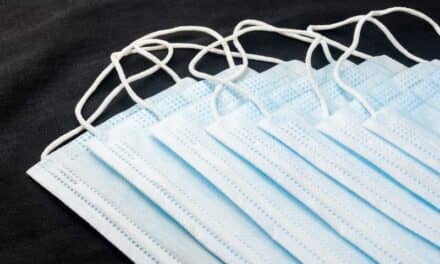As the deadly COVID-19 pandemic continues to wreak havoc around the world with no end in sight, new ways in which to stop the spread or mitigate the effects of the disease are few. Fortunately, some University of New Mexico researchers have found a possible breakthrough in how to manage COVID-19, as well as future viruses.
A team led by the Center for Biomedical Engineering faculty David Whitten, Distinguished Professor in the Department of Chemical and Biological Engineering, along with Eva Chi and Linnea Ista, faculty members in the same department, have found some light at the end of the tunnel, so to speak.
The main finding of their research, highlighted in the paper, “Highly Effective Inactivation of SARS-CoV-2 by Conjugated Polymers and Oligomers,” published this week in the journal ACS Applied Materials & Interfaces, involves the ability of the combination of certain polymers and oligomers, when combined with UV light, to almost completely kill the coronavirus.
Although disinfectants such as bleach or alcohol are effective against the virus, they are volatile and corrosive, which limit lasting sterilization of surfaces treated by these products, Whitten says. What is different about these polymer and oligomer materials is that when activated with UV light, they provide a coating that is shown to be fast acting and highly effective, reducing the concentration of the virus by five orders of magnitude, Chi says.
“These materials have shown to have broad-spectrum antiviral properties,” she says.
Whitten points out that in order for the material to be active against the virus, it must be exposed to light. Light activates the “docking” process that is important and necessary for placing the oligomer or polymer at the surface of the virus particle, allowing the absorption of light that generates the reactive oxygen intermediate at the surface of the virus particle.
“As far as we know so far, materials such as ours are not active against SARS-CoV-2 in the dark and require activation by irradiation with ultraviolet or visible light, depending on where the specific antimicrobial absorbs light,” he says. “In the dark, our antimicrobial materials ‘dock’ with the virus, and then on irradiation, they activate oxygen. It is this active, excited state of oxygen that starts the chain of reactions that inactivate the virus.”
And this science can easily be applied into consumer, commercial and healthcare products, such as wipes, sprays, clothing, paint, personal protective equipment (PPE) for healthcare workers, and really almost any surface.
“When incorporated into N95 masks, this material works well against the virus,” Chi says. “In addition to trapping the virus in a mask, this would make for better PPE and prolong its life.”
Another unique advantage of this material is that unlike traditional disinfectant products, it is shown to not wash away with water and leaves no toxic residue as a result of the photodegradation process, Chi says.
Studying the potential of conjugated polymers and oligomers is nothing new for UNM researchers. In fact, Whitten and another of the authors on the study, Kirk Schanze, have been researching this area for a couple of decades.
Whitten and Chi says colleagues such as Schanze and others have collected a lot of data on polymer and oligomers, so when the pandemic hit in the spring, Whitten almost immediately started wondering how his area of study could help. “It was the right timing for all of us,” Chi says.
Acquiring live coronavirus for research is not an easy feat, but thanks to the efforts a couple of team members, they were able to make it happen.
Alison Kell, a faculty member in the UNM School of Medicine, was the one who was able to acquire the live coronavirus for testing the effectiveness of these materials. She has been working with the SARS-CoV-2 virus in her research and was able to develop a protocol for analyzing samples the team prepared and exposing them to near UV or visible light.
Due to the sensitive nature of working with a virus such as coronavirus, it was crucial for Kell to be part of the team, since the work had to be done in cooperation with the UNM School of Medicine, which has BSL-3 lab facilities that are essential to doing study on the highly-contagious active virus, Ista says.
Whitten says their research has found that adding the material into wipes would add only pennies per wipe. Additionally, the material could be added into masks and other personal protective equipment, changing the game for healthcare facilities and other industries. In addition to coronavirus, these products could also help eliminate infections by the common cold, seasonal flu and other viral and bacterial infections that plague millions of people annually. “There is a limitless market for this,” he says.
He added that the current pandemic is likely not the last such public health crisis we will see, so even after a vaccine for coronavirus is available, such products could be useful in combatting a wide variety of viruses and bacteria, including the flu or common cold. “We’re not just thinking about COVID but other pathogens and any viral agents,” Whitten says. “We want to be ready for the next pandemic.”
This research was funded by a grant from the National Institutes of Health.





